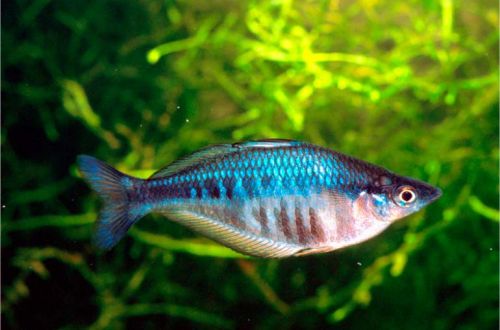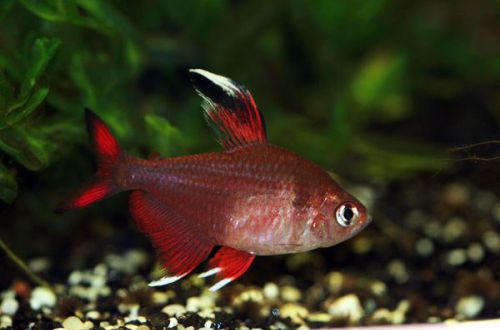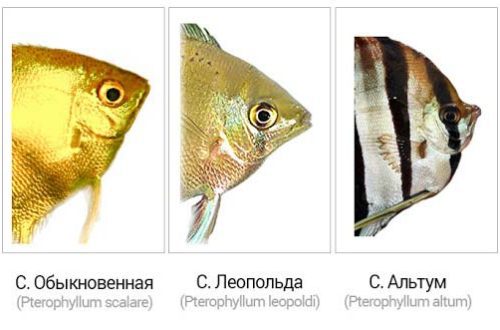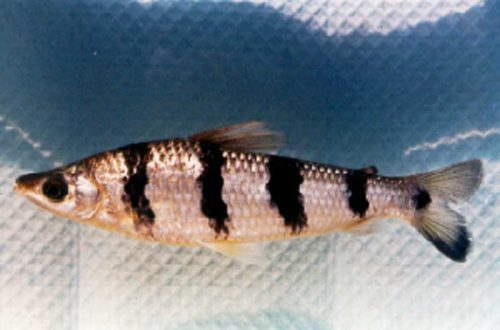
Hilaterin Axelrod
Chilatherina Axelrod, scientific name Chilatherina axelrodi, belongs to the family Melanotaeniidae (Rainbows). The fish was discovered in 1979 by a group of international researchers during a scientific expedition to study the species diversity of the river systems of the island of New Guinea. The new species was named after Herbert R. Axelrod, who sponsored this expedition.

Contents
Habitat
Fish come from New Guinea – an island located in the western Pacific Ocean and north of Australia. The habitat is roughly limited to the Sandown province of the state of Papua New Guinea.
Inhabits sections of rivers with a slow flow, backwaters. It occurs near thickets of aquatic plants, flooded snags.
Description
Adult males reach a length of about 10 cm, females are somewhat smaller – about 8 cm. Body color varies from bluish-gray to greenish-brown on its upper half. The lower part of the body is lighter, silvery. Up to 10 dark markings are noticeable along the lateral line, which merge into a black stripe from the middle of the caudal peduncle. On the lower half of the body there are 6-10 dull dark vertical stripes. In the upper half of the body, bluish tints are visible. The dorsal, pelvic and caudal fins are yellow, the rest are translucent.
The color features listed above are primarily characteristic of males. Females are less bright, the color is close to monochromatic.
Behavior and Compatibility
Peaceful mobile fish that prefer to live in small groups of 6-8 individuals. Compatible with many other non-aggressive species of comparable size.
Brief information:
- The volume of the aquarium – from 150 liters.
- Temperature – 24-31°C
- Value pH — 7.0–8.4
- Water hardness – medium and high hardness (15-20 dGH)
- Substrate type – any
- Lighting – moderate, bright
- Brackish water – no
- Water movement – weak, moderate
- The size of the fish is about 10 cm.
- Food – any food
- Temperament – peaceful
- Keeping in a flock of 6-8 individuals
Maintenance and care, arrangement of the aquarium
The optimal size of the aquarium for 6-8 fish starts from 150 liters. In the design, it is recommended to combine areas of open water for swimming and places for shelters. The latter can be made from natural snags, clusters of plants, including floating ones.
Hilaterin Axelrod prefers water of medium hardness with pH values above the neutral mark. Maintain a high temperature of 24–29°C. For example, wild specimens recorded by members of the 1979 expedition were collected in a tropical stream with a temperature of 28°C.
In an aquarium, such a temperature regime can provoke hypoxia. For this reason, it is important to ensure sufficient water aeration and promptly remove organic waste that actively absorbs oxygen from water during decomposition.
Food
Omnivorous species. Can be accustomed to dry food. It can be dry flakes, granules, brine shrimp, daphnia, bloodworms, as well as live or fresh similar products.
Sources: FishBase, rainbowfish.angfaqld.org.au





